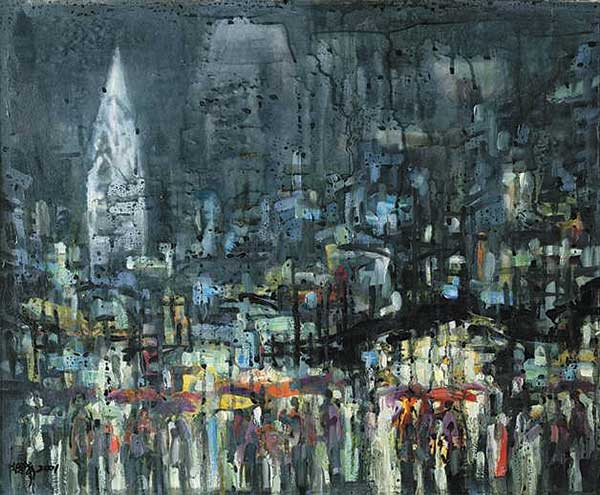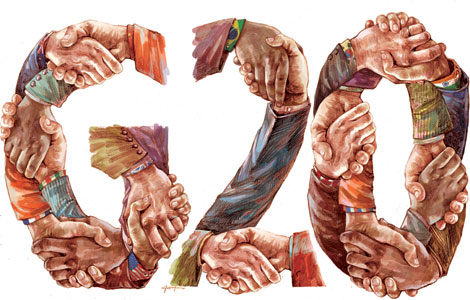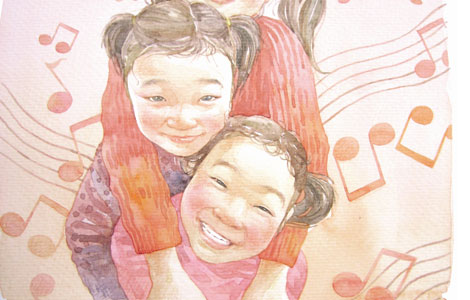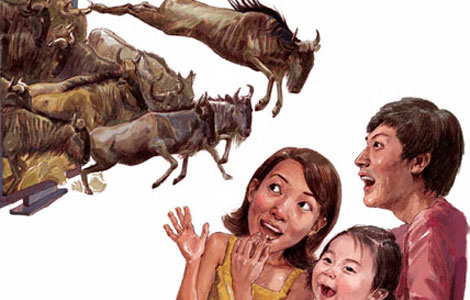Artist imbues modern cityscapes with ancient flavor
Updated: 2013-09-07 00:49
By Dengzhangyu (China Daily)
|
||||||||
Landscapes, mountains and rivers are classical themes of traditional Chinese paintings, but Xu Xi, 73, has spent the latter half of his career painting urban scenes, inspired by the ink paintings of the East and color from the West.
After living in New York for 10 years, the energetic painter recently held a retrospective exhibition of his works at the National Art Museum of China in Beijing. On display are 150 pieces of his work created over the past 40 years, mainly featuring his ink paintings.
|
 |
|
Ink paintings by Xu Xi feature the night of Manhattan . Provided to China Daily |
Xu has painted landscapes of cities at home and abroad. The cities in China include ancient cities in Hunan province, the busy market in Lhasa, the mountainous city of Chongqing and water towns in Zhejiang province. He also painted a series of New York City and another series depicting other parts of the US, including Alaska and San Francisco, and later a series of European cities.
"Instead of natural landscapes, Xu's works combine our city lives with the spirit of natural landscapes. That's where his art value is and also where the new direction of Chinese ink painting is,"says Fan Di'an, director of the National Art Museum of China.
Before moving to the US, Xu was well-known for his ink paintings of ancient riverside towns in southern China. He was praised by Chinese art critics for his images of water towns in rain, in snow and in the dim light of night.
In 1989, then 49-year-old Xu decided to move to the US to broaden his horizons and to learn things from the West that he could incorporate into his traditional ink painting.
"What impressed me most from Western art is the use of colors. So I explored a way to combine the colors and the black-and-white ink paintings,"Xu says.
American art critic Dennis Wepman said Xu Xi has arrived at his remarkable synthesis of traditional and modern, Eastern and Western, through life experiences different from those of most contemporary Oriental artists.

 'Despicable' minions upset Depp's 'Lone Ranger' at box office
'Despicable' minions upset Depp's 'Lone Ranger' at box office
 'Taken 2' grabs movie box office crown
'Taken 2' grabs movie box office crown
 Rihanna's 'Diamonds' tops UK pop chart
Rihanna's 'Diamonds' tops UK pop chart
 Fans get look at vintage Rolling Stones
Fans get look at vintage Rolling Stones
 Celebrities attend Power of Women event
Celebrities attend Power of Women event
 Ang Lee breaks 'every rule' to make unlikely new Life of Pi film
Ang Lee breaks 'every rule' to make unlikely new Life of Pi film
 Rihanna almost thrown out of nightclub
Rihanna almost thrown out of nightclub
 'Dark Knight' wins weekend box office
'Dark Knight' wins weekend box office
Most Viewed
Editor's Picks

|

|

|

|

|

|
Today's Top News
US agencies decry latest Snowden revelations
Obama rejects pressure to abandon Syria plan
Web firms sued for spreading rumors
Open up private market, Li says
Xi warns Abe over Diaoyu Islands
Xi, Obama discuss Asia-Pacific
Smithfield deal passes US review
Think tank seeks G20 secretariat
US Weekly

|

|







